If you want to know how to stop pop-ups on Chrome, you’ve come to the right place. Pop-ups are among the common things that occur when using the Internet.
However, some websites go too far and frustrate users by constantly disrupting them with intrusive messages and ads that interfere with their workflow.
You can use helpful tools to stop pop-ups in Google Chrome and prevent dealing with such annoying adverts.
This guide will show you how to block pop-ups on Chrome.
Let’s begin.
How to Stop Pop-Ups on Chrome
In the following sections, you’ll know how to get rid of Google Chrome pop-ups using the methods discussed.
Go through them and choose the solution that works for you.
Method 1: Make Sure You Are Using Chrome’s Latest Version
If you want to know how to stop pop-up ads on Chrome, make sure your Chrome is updated to the latest version.
Updating your Chrome browser is crucial because security fixes that address vulnerabilities are usually included in browser updates.
Occasionally, pop-up ads are linked to malicious software or hacked websites.
So, you should constantly update your browser to improve its defenses against such cybersecurity threats.
Also, Chrome updates often improve the browser’s overall performance, including better handling of pop-up ads.
Here’s how to check and update your browser:
- Restart the browser, click on the three dots in the top-right corner, click Help, and select About Google Chrome.
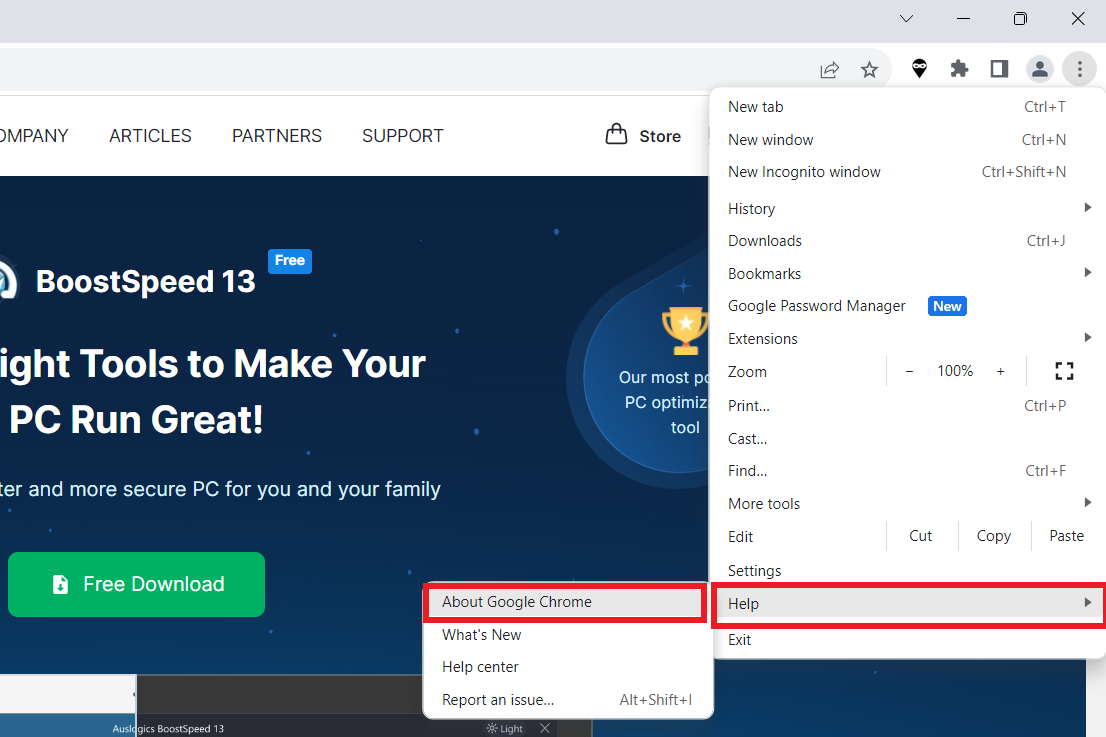
- Note that you won’t see the option if your browser is already up to date.
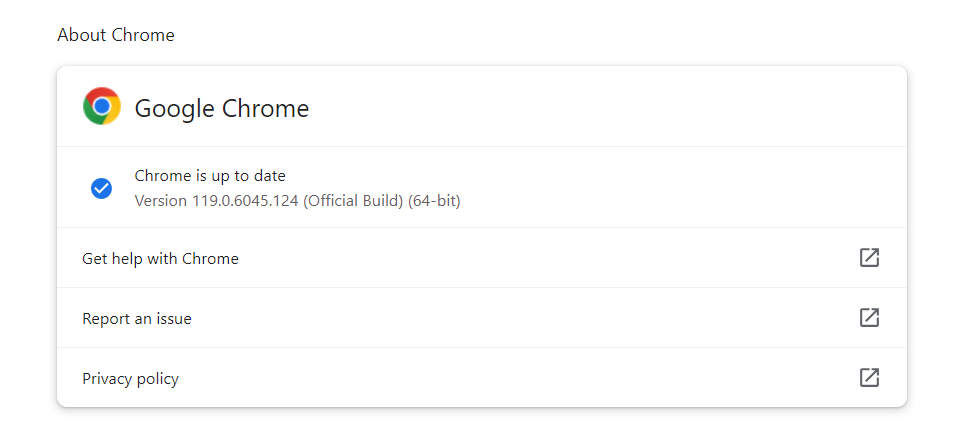
- Restart the browser for the update to take effect.
Related: Here is How to Report Malware Websites in Google Chrome
Method 2: Use Google Chrome’s Pop-Up Blocker to Stop Pop-Ups
If you’ve been asking this question, “Why do pop-ups keep appearing on Chrome even after updating the browser,” use Chrome’s pop-up blocker.
First, you must find out how to enable the built-in pop-up blocker in Chrome. The tool will prevent annoying websites from popping up.
If you want to know the answer to the question, “Where is the pop-up blocker on Chrome?” follow these steps:
- Launch Google Chrome.
- Once the browser opens, go to the top-right corner and click on the vertical three dots.
- Click on Settings in the menu that shows up.
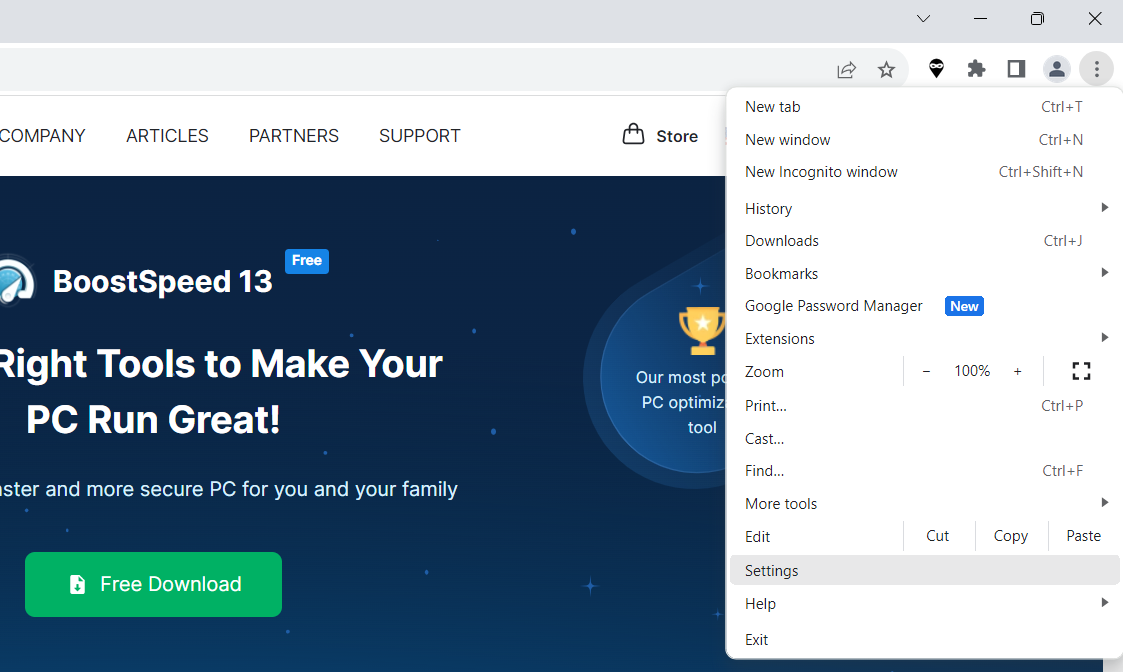
- Next, scroll down to the Privacy and security section on the Settings page and click on Site settings.
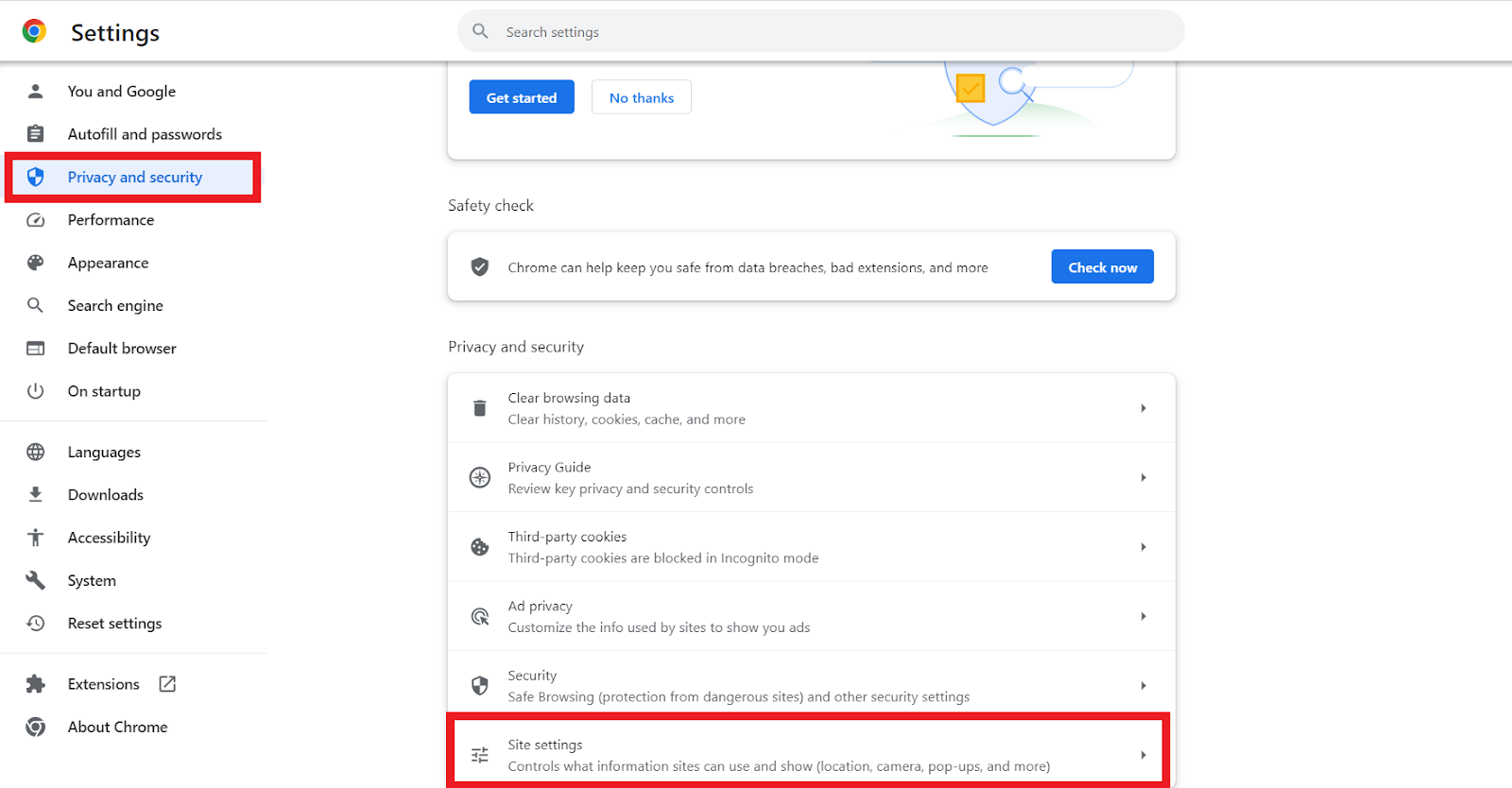
- Select Pop-ups and redirects.
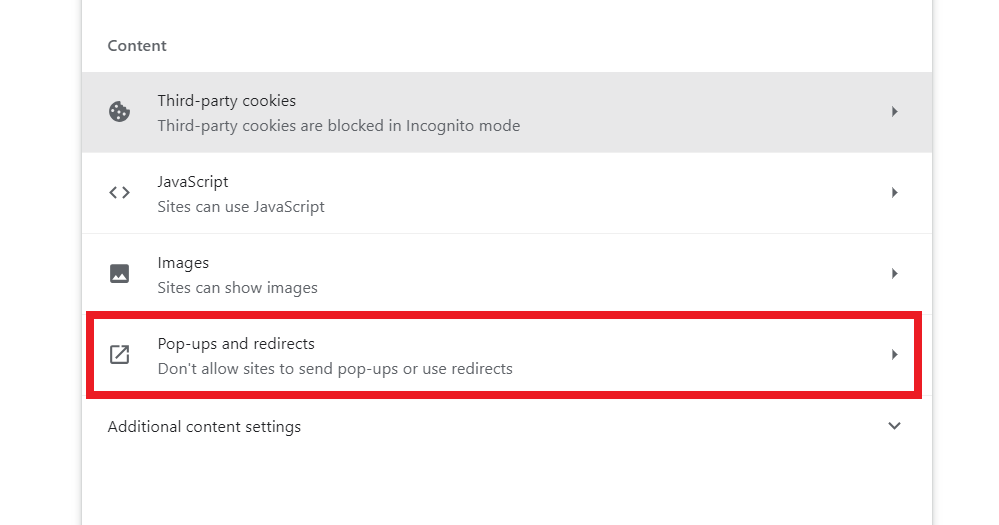
- Once the Pop-ups and redirects page opens, go to Default behavior and select Don’t allow sites to send pop-ups or use redirects.

This is how to stop ads on Google Chrome using its own pop-up blocker. If this method doesn’t work, check the next method.
Related: How to Reset the Google Chrome Browser to Its Default Settings?
Method 3: Allow or Block Specific Websites
You can also learn how to block pop-ups on Chrome by allowing or blocking specific websites.
This option is handy since some websites offer great products in a less intrusive manner.
Here’s how to allow a site on Chrome:
- Launch Google Chrome.
- Once the browser opens, go to the top-right corner and click on the three vertical dots.
- Click on Settings in the menu that shows up.
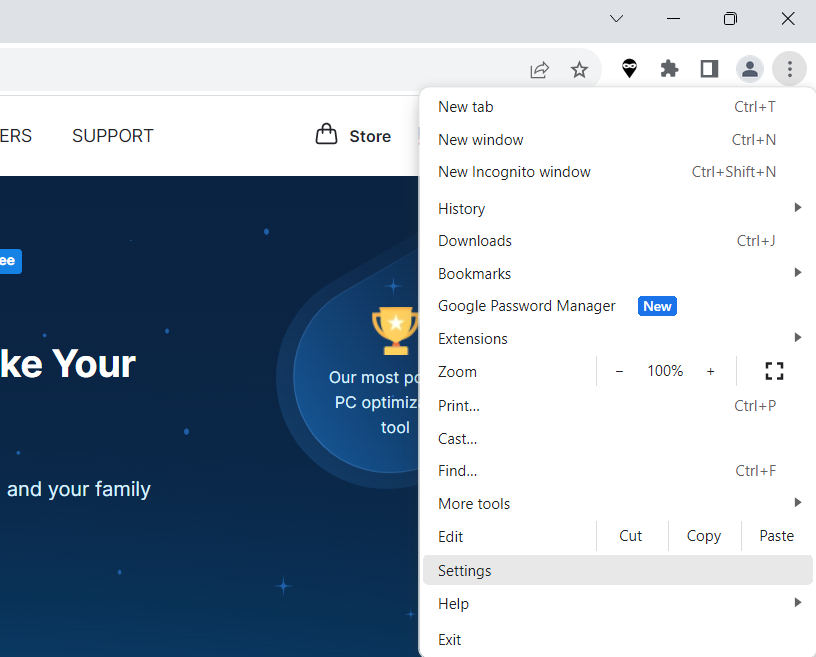
- Next, click Privacy and security and select Site settings.

- Select Pop-ups and redirects.

- After the Pop-ups and redirects page, scroll down to Customized Behaviors.
- Click the Add button next to Allowed to send pop-ups and use redirects.
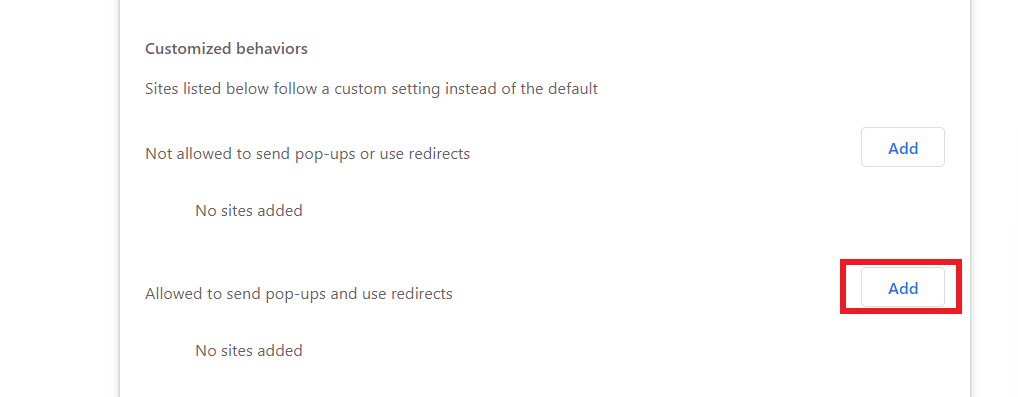
- Enter the site’s web address using the format in the text box.
- Click on Add.
How to Block Websites on Chrome:
- Launch Google Chrome.
- Click on the three vertical dots in the top right corner.
- Click on Settings in the menu that shows up.
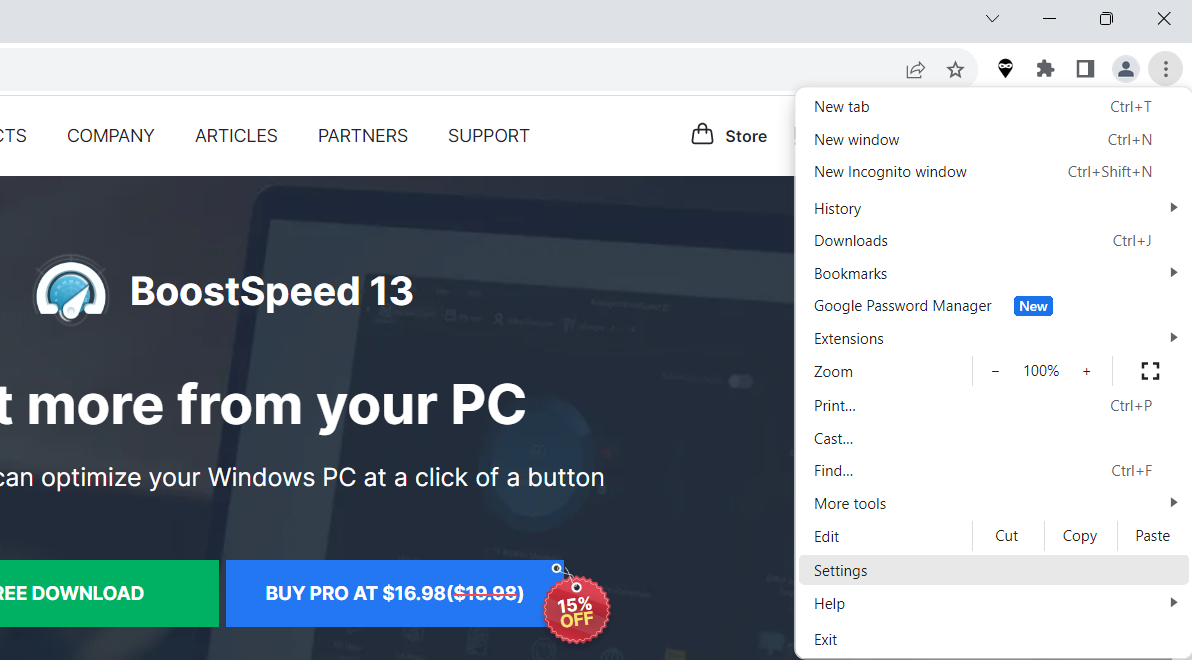
- Click Privacy and security and select Site settings.
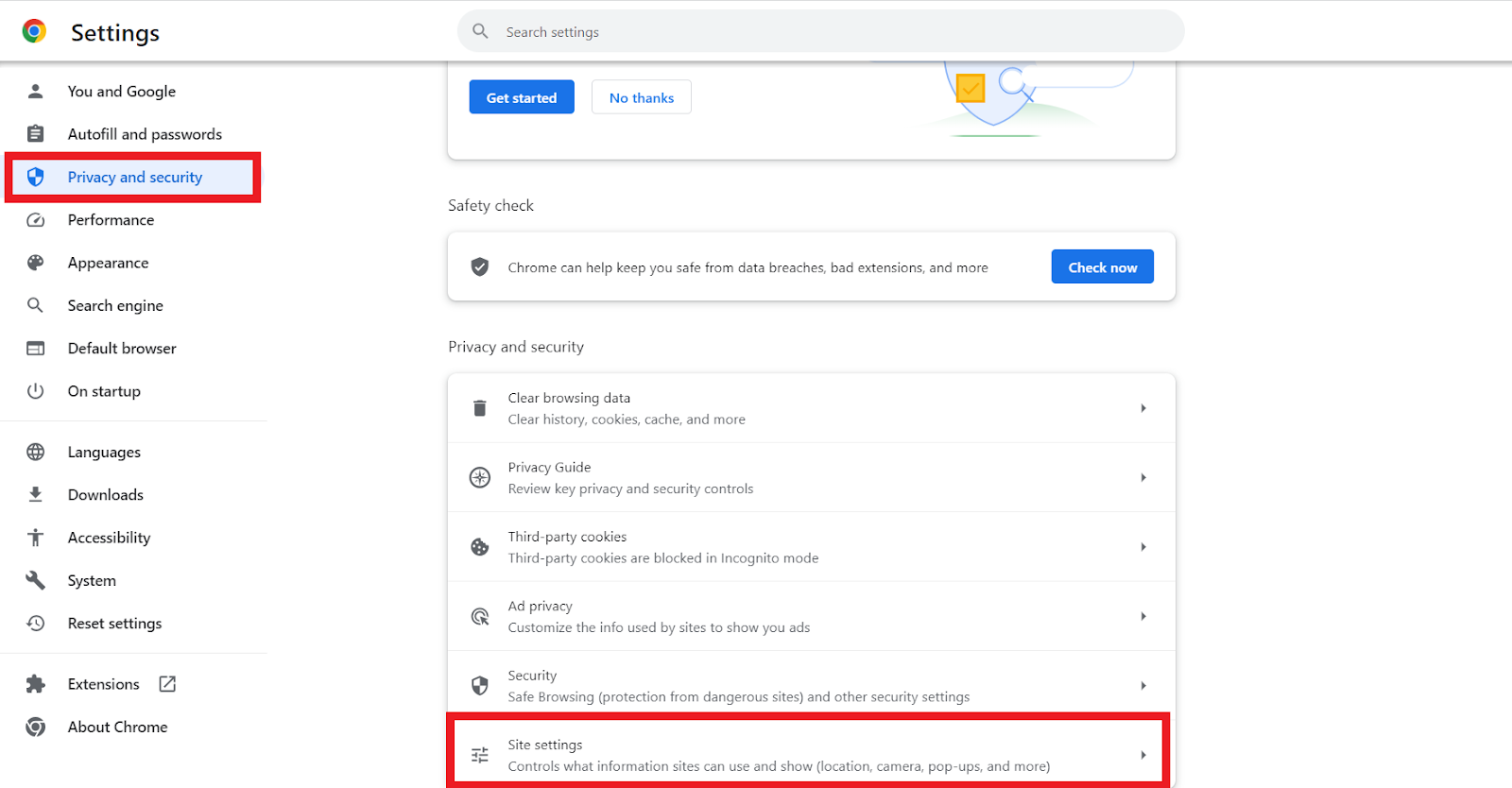
- Select Pop-ups and redirects.
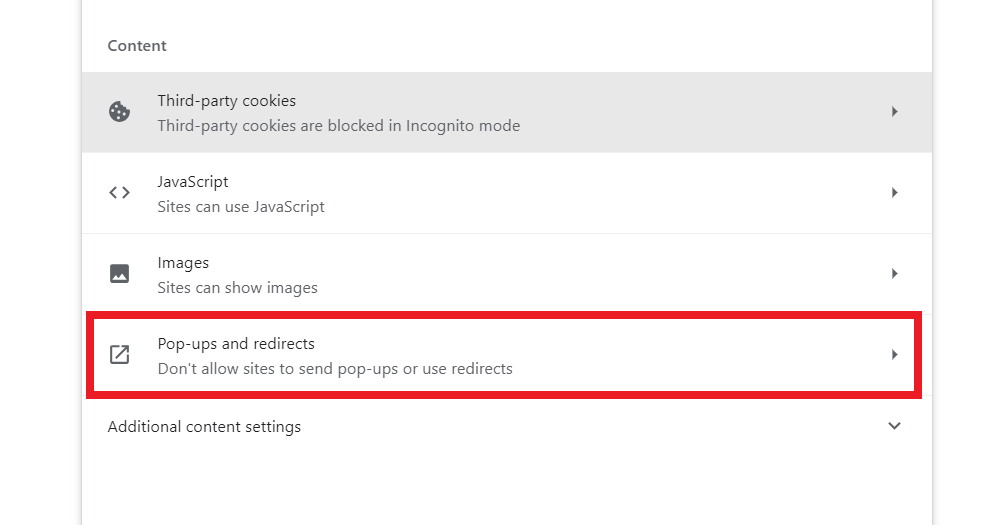
- Scroll down to Customized behaviors.
- Click the Add button next to Not allowed to send pop-ups and use redirects.

- Enter the site’s web address using the format in the text box.
- Click on Add.
This method can help if you want to know how to stop pop-up ads on Chrome . If this method doesn’t fix the pop-ups, check the next method.
Also Read: How to Change Location on Google Chrome?
Method 4: Disable Notifications for the Site
If a site sends you notifications, you must have clicked on one of the notification request pop-ups. Fortunately, you can easily stop the site’s notification permission.
Here’s how to how to stop pop-ups on Chrome by disabling the notifications:
- Open the website you want to block in Chrome.
- Click on the padlock icon in the search bar.
- Select the Site settings option in the context menu.
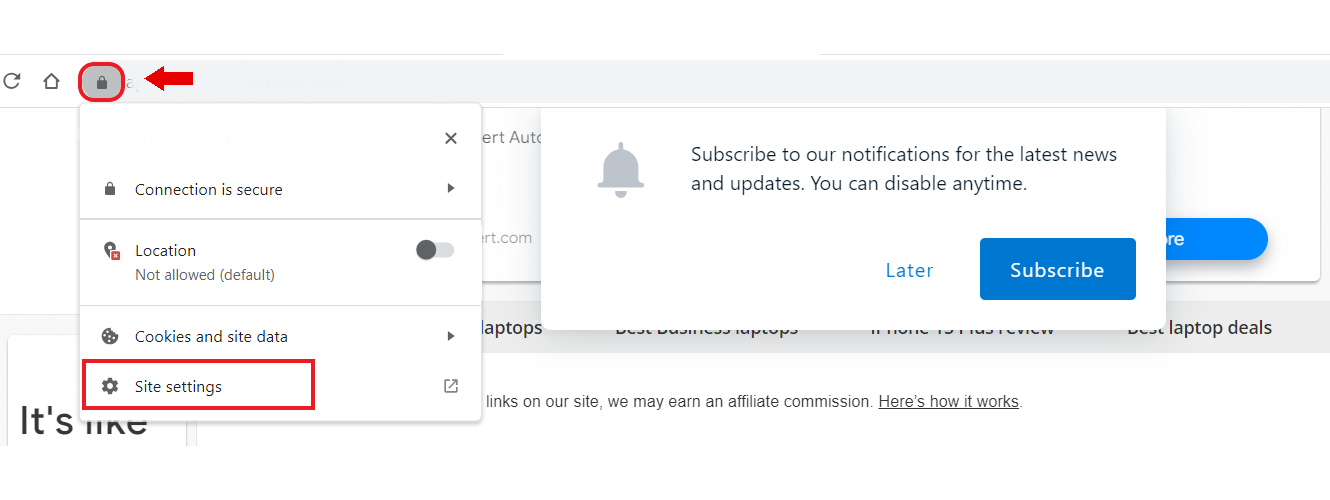
- After the Settings tab opens, select Block in the Notifications drop-down menu under Permissions.
- Repeat steps for other sites you don’t want the push notifications from.
If you don’t want to receive any notifications, follow the steps below:
- Click on the three vertical dots and select Settings.
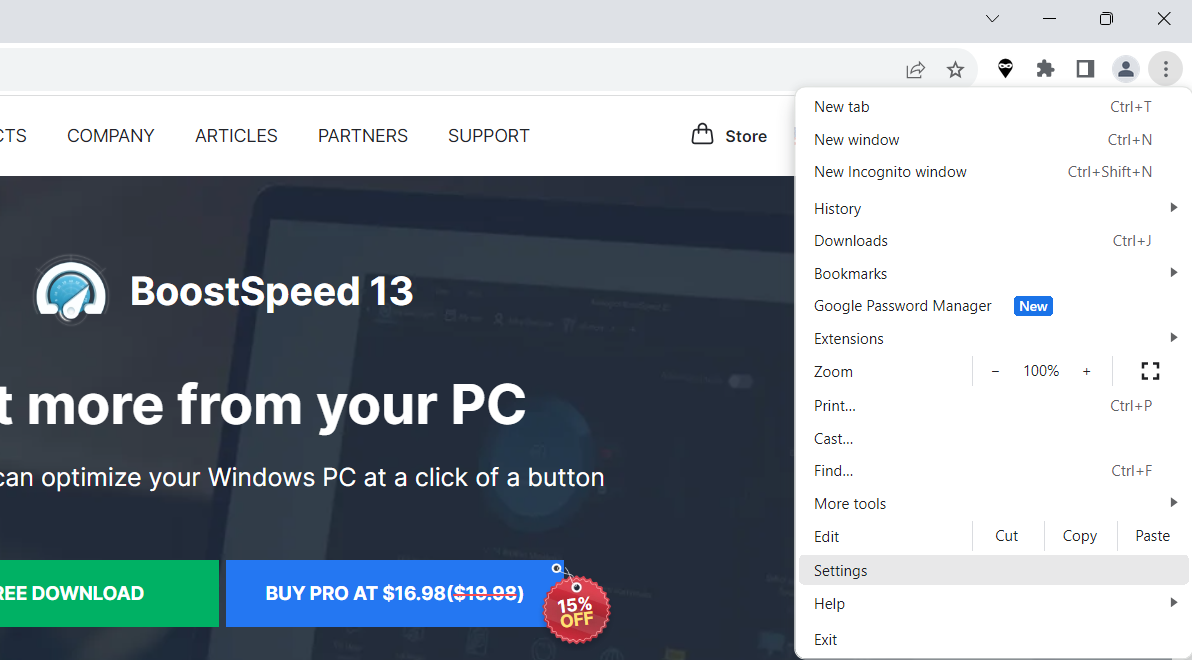
- Click on Privacy and security and select Site settings.

- Select Notifications under Permissions.
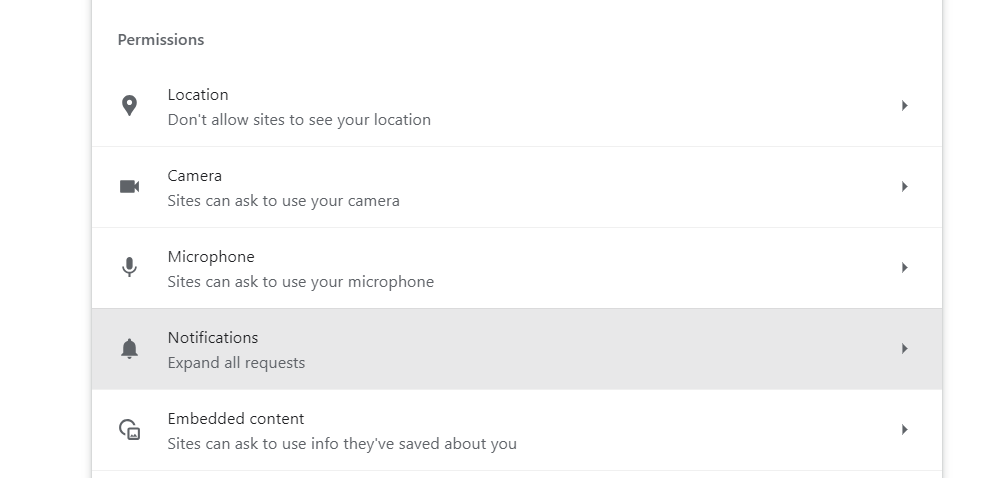
- Select Don’t allow sites to send notifications under Default behavior.
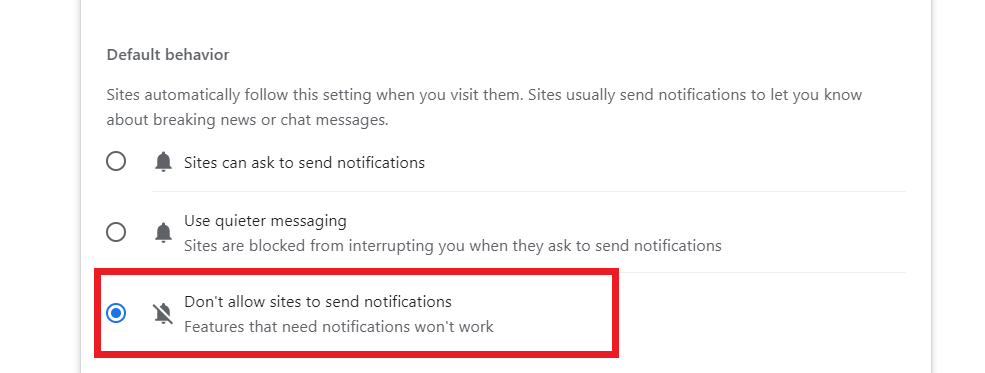
This method will prevent sites from sending you notifications.
Also Read: Fix “Google Chrome Is Waiting for Cache” Issue on Windows 10
Method 5: Get Rid of Malware
Adware and other types of malicious programs could cause incessant pop-ups and redirects.
This could be the case if:
- unwanted toolbars and Chrome extensions return after you remove them,
- your browser redirects to unknown web pages,
- you keep seeing new tabs and pop-ups that won’t go away, and
- virus alerts keep popping up.
Since Google discontinued the Chrome Cleanup Tool, you must use other means to fix the problem. That’s where Auslogics Anti-Malware comes in.
How to Block Pop-Ups on Chrome Using Auslogics Anti-Malware
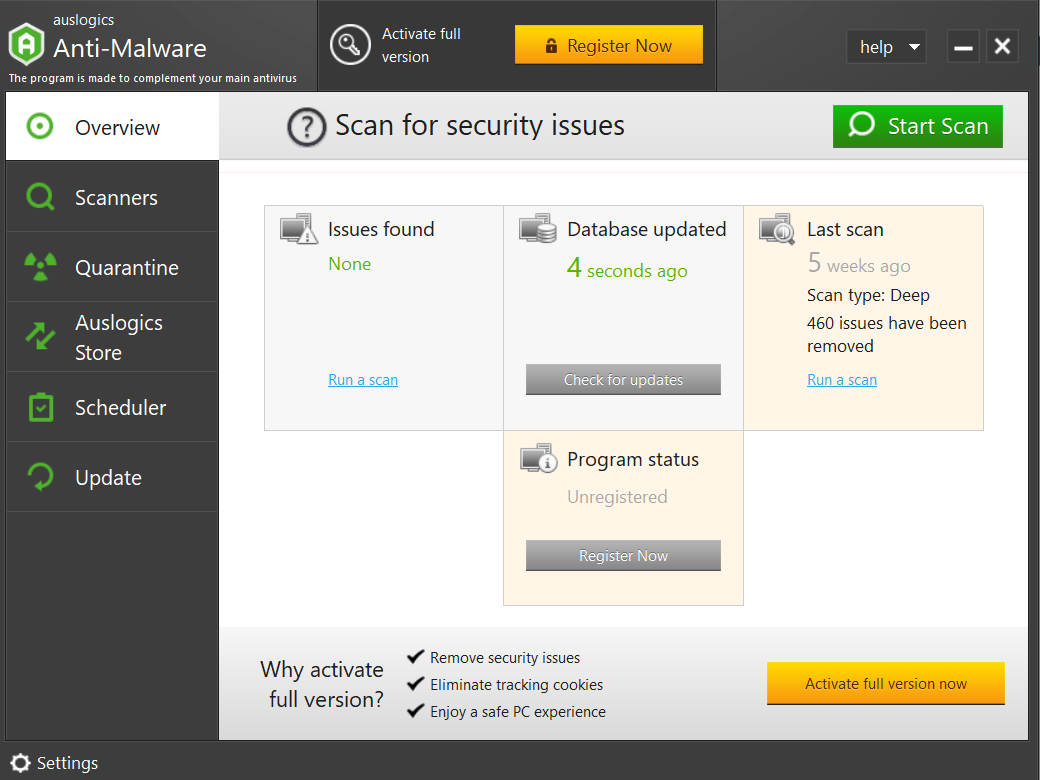
Auslogics Anti-Malware can help prevent Chrome ad pop-ups by providing robust malware protection.
This anti-malware tool identifies and removes several types of dangerous software, such as adware, which could be the cause of Chrome’s intrusive pop-up ads.
Using Auslogics Anti-Malware to scan your computer can help you find and remove any potential threats that might produce intrusive adverts.
The real-time protection features of this program can prevent the installation of adware and other malware before they can affect your browsing experience.
That’s because adware usually hides in the background.
Here’s how it works:
- Visit Auslogics’ official website and download the Auslogics Anti-Malware.
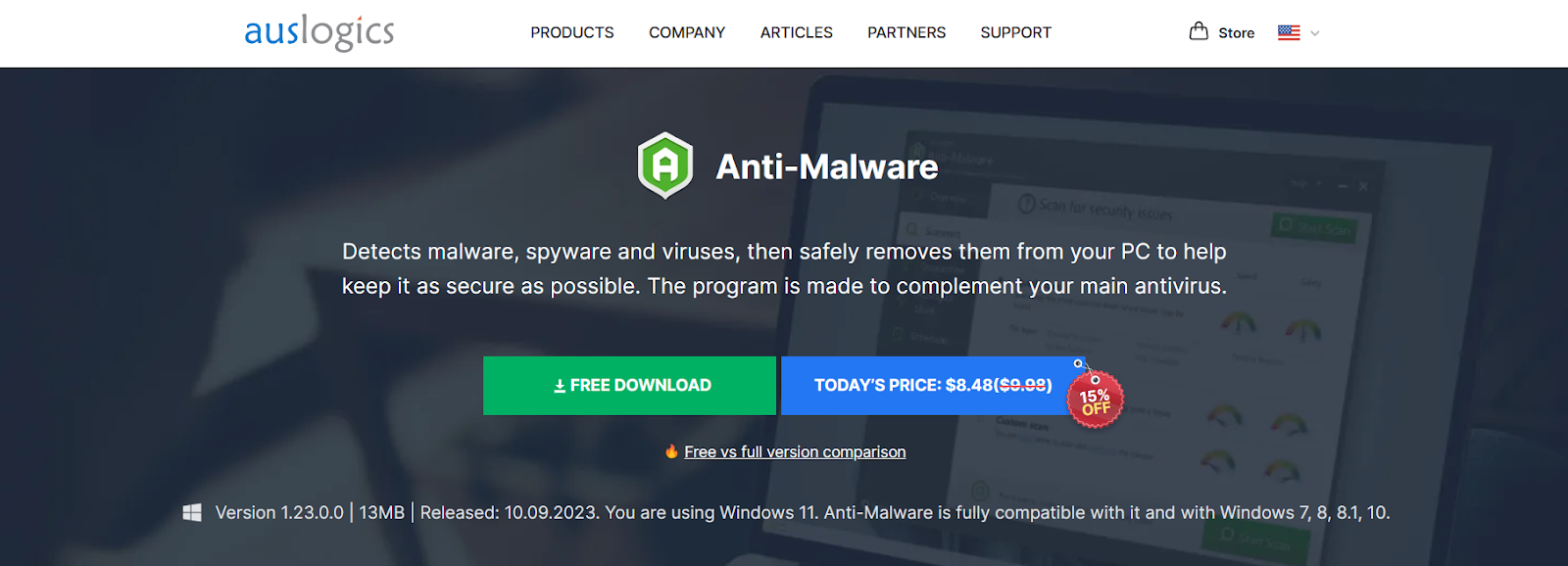
- Run the executable file and install the program.
- The tool will automatically search your computer for any malware.
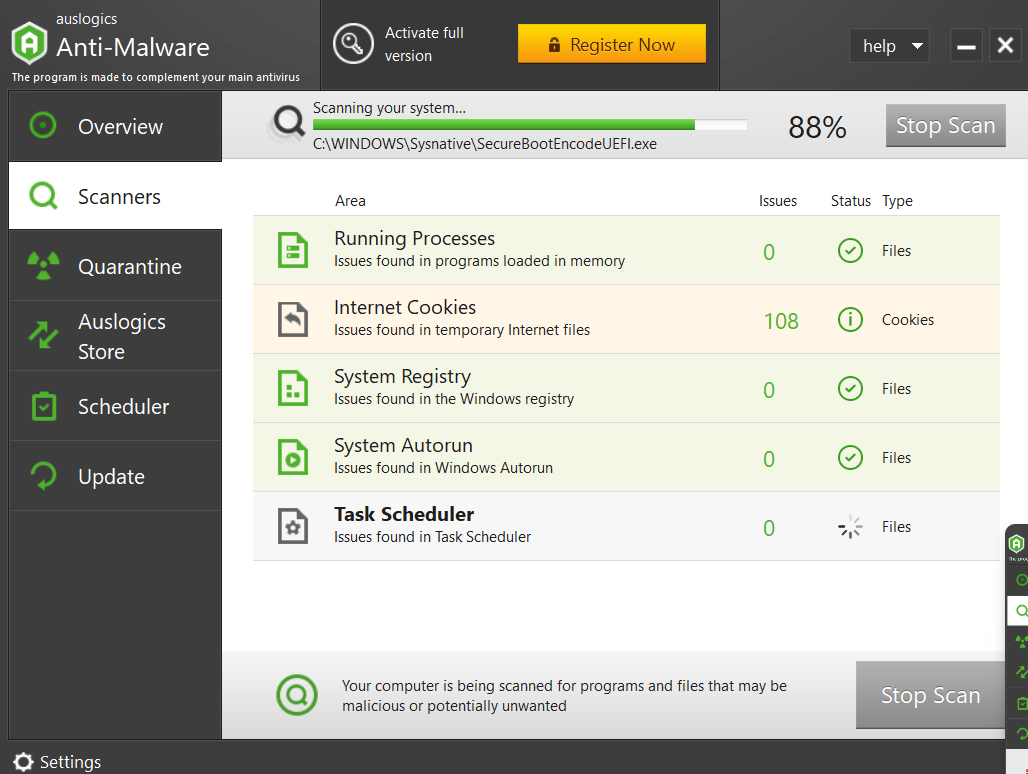
- After the scan, it’ll display all the potential malware. You can review the list and select the objects you want to delete.
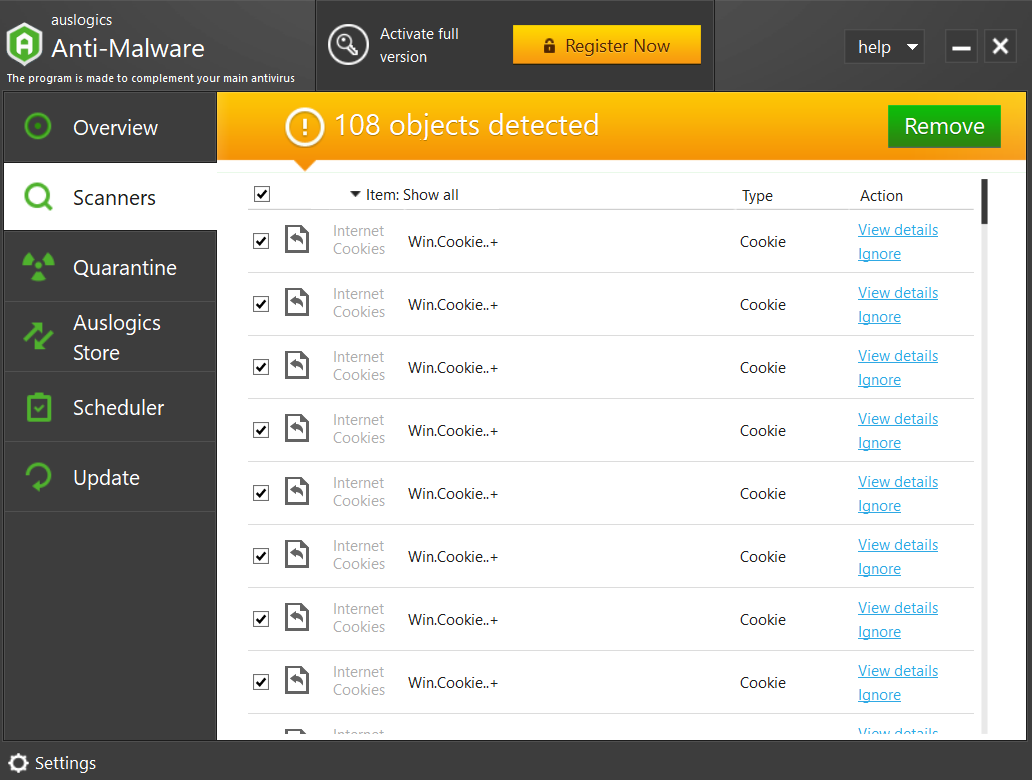
If you want to know how to stop ads on Google Chrome, Auslogics Anti-Malware can help. The program constantly updates its database to stay current on emerging threats.
This ensures your system’s protection against constantly changing ad pop-up strategies.
Related: Auslogics Anti-Malware: Features and Reviews
Method 6: Remove Browser Extensions
If the endless pop-ups appear after installing a Chrome extension, disable or remove the extension and check if that resolves the problem.
Here’s how to disable a Chrome extension:
- Launch Google Chrome.
- Once the browser opens, go to the top-right corner and click on the three vertical dots.
- Click on Settings and select Extensions.
- On the redirected page, toggle off the switch under the extension to disable it or click the Remove button to remove it.
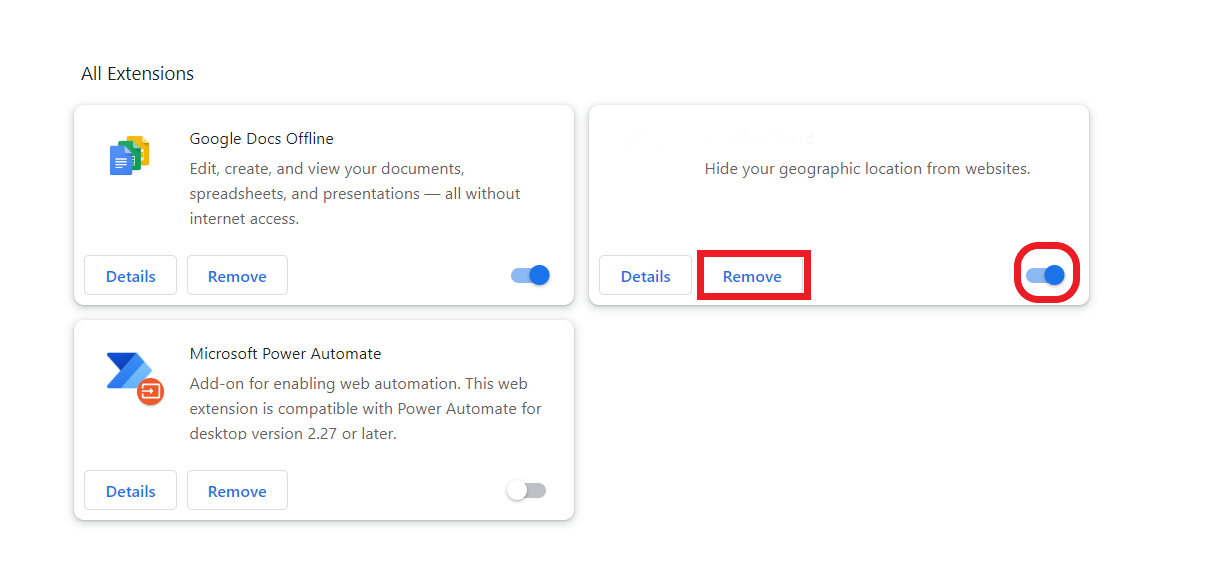
Related: Microsoft Edge Browser Extensions: All You Need to Know
Conclusion
If you want to know how to stop pop-ups on Chrome, follow these crucial instructions. Update your browser frequently for enhanced security and functionality.
Use the built-in pop-up blocker in Chrome, and use the “Pop-ups and redirects” settings to change how websites behave.
Furthermore, use programs like Auslogics Anti-Malware to handle alerts and possible malware. Disable or eliminate troublesome browser add-ons.
All of these solutions work together to provide a safer, more seamless browsing experience without obtrusive pop-up ads.
FAQ
Check “Don’t allow sites to send pop-ups or use redirects” to prevent pop-up ads. Although total removal may not always be possible, following these methods will greatly reduce intrusive pop-ups and provide a more seamless browsing experience.
So, some websites may prevent you from accessing their website if you use ad blockers. This creates a trade-off between promoting the free content ecosystem and maintaining a cleaner online experience.
However, if you use the Internet less frequently, you delete the browsing data once a month. This can improve your browsing speed and protect your privacy.
This way, you can take advantage of the most recent features, security patches, and bug fixes without actively searching for updates.
![[EASY GUIDE] How to Stop PopUps in Google Chrome?](https://www.auslogics.com/en/articles/wp-content/uploads/2023/11/EASY-GUIDE-How-to-Stop-Pop-Ups-in-Google-Chrome--568x359.jpg)